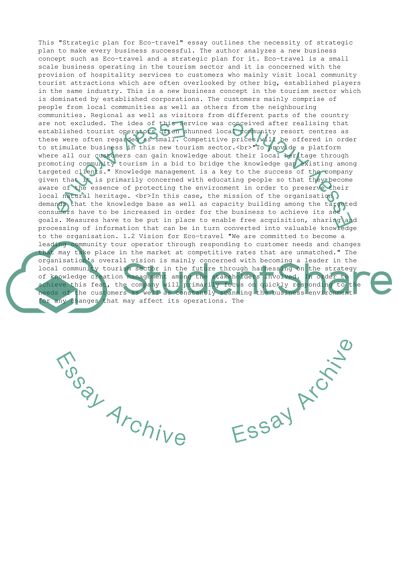Cite this document
(“Strategic Plan for Eco-travel Essay Example | Topics and Well Written Essays - 4250 words”, n.d.)
Retrieved from https://studentshare.org/business/1396350-strategic-plan-for-eco-travel
Retrieved from https://studentshare.org/business/1396350-strategic-plan-for-eco-travel
(Strategic Plan for Eco-Travel Essay Example | Topics and Well Written Essays - 4250 Words)
https://studentshare.org/business/1396350-strategic-plan-for-eco-travel.
https://studentshare.org/business/1396350-strategic-plan-for-eco-travel.
“Strategic Plan for Eco-Travel Essay Example | Topics and Well Written Essays - 4250 Words”, n.d. https://studentshare.org/business/1396350-strategic-plan-for-eco-travel.


